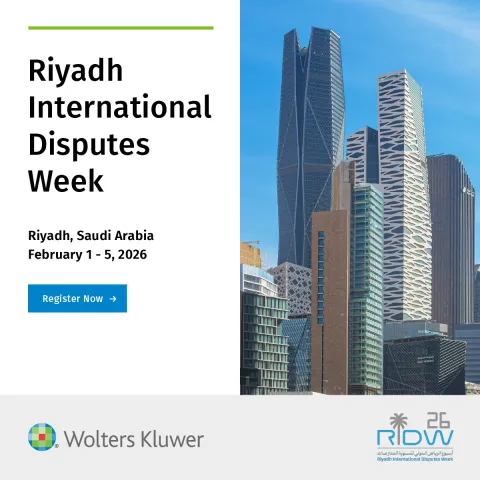Pakistan’s Mediation Shift: Implementing the Singapore Convention
August 6, 2025
Introduction
Pakistan has taken a significant step by signing the United Nations Convention on International Settlement Agreements Resulting from Mediation (Singapore Mediation Convention) on 23 May 2025. The Singapore Mediation Convention (Convention) will help strengthen the mediation framework as a reliable, expedited, and cost-efficient dispute resolution method to facilitate international trade and attract foreign investment. It deals with the enforcement of International Mediated Settlement Agreements (iMSAs) in cross-border disputes. However, the benefits of this Convention would not be achieved without taking practical measures.
This article aims to outline the mediation framework in Pakistan, the implications of the Convention in Pakistan, case analysis of where mediation would have benefited, and the capacity building to effectively enact the Convention.
Mediation Laws in Pakistan
Pakistan does not have a exclusive legislation on mediation. It has been developed alongside arbitration and other dispute resolution methods. It is fragmented and can be seen in different statutes such as the Alternative Disputes Resolution (ADR) Act 2017, Sindh CPC Amendments 89 A & B 2018, Punjab ADR Act 2019, KPK ADR Act 2020, Balochistan ADR Act 2022, the Conciliation Courts Ordinance 1961, Small Claims and Minor Offences Ordinance 2002, Muslim Family Law Ordinance 1961, the Family Courts Act 1964 (Sec. 10), Income Tax Ordinance 2001 (Sec. 134A), Punjab Consumer Protection Act 2005 (Sec. 29), Punjab Sales Tax Act 2012 (Sec. 69), and the Companies Act 2017 (Sec. 6, 276, and 277).
Internationally, almost all free trade agreements Pakistan has signed with other countries, such as with China, Turkey, Sri Lanka and Azerbaijan contain a dispute resolution clause that requires parties to first attempt amicable settlement through mediation. If mediation fails, parties can then opt for arbitration.
Potential Impact of the Convention in Pakistan
Signing of the Convention had added to the ongoing efforts of Pakistan to established a pro dispute resolution environment in Pakistan. This step aims to strengthen the business environment; it aligns well with the National Judicial Policy 2009 and the Principles of Policy in the Constitution of Pakistan.
Strengthening the Business Environment
Before signing the Convention, Pakistan lacked a direct mechanism for enforcing international mediated settlement agreements (iMSAs). Subsequently, the parties were left with two options: either convert iMSAs into arbitral awards enforceable under the Recognition and Enforcement Act 2011 or litigate the agreement in the country of enforcement as a binding contract. With the signing of the Convention, Pakistan has committed to simplifying the enforcement of iMSAs, which is expected to enhance investor confidence and improve Pakistan’s ranking in ease of doing business by providing a more predictable and efficient dispute resolution mechanism.
Alignment with the National Judicial Policy and Principles of Policy
The National Judicial Policy 2009 emphasizes the role of ADR, particularly mediation, in expeditiously resolving cases. Despite this policy, significant progress in institutionalizing mediation has not materialized and remains overlooked. Signing the Convention signals a renewed commitment to ADR, but it must be complemented by concrete legal reforms and awareness campaigns. Similarly, Article 37(d) of the Constitution of Pakistan, which mandates providing inexpensive and expeditious justice, strengthen the case for strong mediation framework. Therefore, signing the Convention aligns with the National Judicial Policy and Principles of Policy to develop a mediation framework.
What Past Failures Teach Us About the Need for the Singapore Mediation Convention
Pakistan’s accession to the Singapore Mediation Convention could streamline cross-border dispute resolution. Historically, Pakistani businesses have struggled to resolve their dispute effectively due to lack of efficient dispute resolution mechanisms. One symbolic example is the Reko Diq dispute between Pakistan and Tethyan Copper Company.
Reko Diq: A Case for Mediation?
Although the Singapore Mediation Convention took effect in 2020, nearly a decade after the Reko Diq dispute began in 2011, analyzing this case through the Convention’s framework highlights the advantages of enforceable mediation. The dispute began when the Baluchistan provincial government denied Tethyan Copper Company (TCC) a mining lease for the Reko Diq gold and copper project. In response, TCC initiated arbitration at the International Centre for Settlement of Investment Disputes (ICSID), which, after years of proceedings, awarded the company nearly $6 billion in damages. The lengthy arbitration and domestic litigation imposed significant financial and reputational costs on Pakistan. However, in 2022, the parties reached an amicable settlement, allowing the project to resume under renegotiated terms, highlighting that a mediated resolution could have been achieved much earlier.
If a framework like the Singapore Mediation Convention had existed and if the parties had been encouraged to mediate earlier, the dispute could have been settled much sooner, avoiding reputational harm and the substantial costs of litigation and arbitration. Instead of enduring a decade of legal battles and facing one of the largest arbitral awards in history, Pakistan and TCC could have engaged in structured negotiations, with the assurance that any mediated agreement would be internationally enforceable. The Reko Diq case highlights the importance of Pakistan’s accession to the Convention, as it offers businesses and states a structured mechanism to resolve disputes efficiently.
IPP: A case for Mediation
A similar challenge exists in Pakistan’s energy sector, where unfavorable agreements with Independent Power Producers (IPPs) have placed a significant financial burden on the state and its citizens, leading to soaring electricity costs. Rather than adopting a confrontational approach that risks triggering costly arbitration claims, Pakistan should leverage mediation to renegotiate IPP contracts in a manner that balances investor interests with national economic sustainability. Mediation provides a structured yet flexible platform for parties to reach mutually beneficial solutions, ensuring that disputes do not escalate into high-stakes legal battles. By becoming a signatory to the Convention, Pakistan can enhance investor confidence in its dispute resolution framework while creating opportunities for fair and enforceable renegotiations, fostering long-term energy sector stability.
Way Forward
Capacity Building for Mediation
Pakistan’s accession to the Convention presents a significant opportunity to strengthen mediation capacity and foster a culture of dispute resolution. However, realizing its full potential requires institutional reforms and skill development. Currently, there are few professionals in Pakistan with the expertise to effectively conduct mediation. Judges who handle disputes often view alternative dispute resolution (ADR) with skepticism, and many lawyers see mediation as a threat to their practice rather than an opportunity.
To address these challenges, judicial academies must train judges to develop a more pro-ADR approach, ensuring that mediated settlements are recognized and enforced in line with international best practices. Likewise, lawyers need to be equipped with mediation skills, not only to adapt to the evolving dispute resolution landscape but also to see mediation as a complementary service rather than a replacement for litigation. Long-term initiatives should include integrating ADR into law school curricula to prepare future lawyers for this shift.
Additionally, Pakistan’s bar associations, which conduct vocational training for new lawyers, should incorporate mediation training into their programs. By taking these steps, Pakistan can transform its dispute resolution framework, allowing mediation to gain legitimacy and maturity as an effective means of resolving commercial conflicts.
Need for Legislative Implementation
Simply signing the Convention does not automatically make it applicable in Pakistan. As a dualist country, Pakistan requires parliamentary approval to incorporate international treaties into domestic law. To fully benefit from the Convention, Pakistan must enact legislation to give it legal effect, just as it did with the New York Convention through the Recognition and Enforcement (Arbitration Agreements and Foreign Arbitral Awards) Act, 2011 and with investment-related treaties through the Arbitration (International Investment Disputes) Act, 2011. The next crucial step, therefore, is for Pakistan to pass the necessary legislation to ensure the Convention’s practical implementation.
Conclusion
Pakistan’s accession to the Convention is a significant step toward creating a more predictable and business-friendly dispute resolution landscape. However, without legislative action and institutional reforms, its potential will remain unrealized. By enacting legislation, training judges and lawyers, and integrating ADR into legal education, Pakistan can position itself as a regional hub for mediation, fostering economic growth and investor confidence.
You may also like










Paul Sills
Editorial Comment: What Might Have Been — The Case for Early Mediation in Investor–State Disputes The recent blog post, "Pakistan’s Mediation Shift: Implementing the Singapore Convention", offers both an encouraging policy signal and a reminder of missed opportunities. It rightly positions Pakistan’s accession to the Singapore Convention as a milestone—but the real impact will only be felt if this is accompanied by meaningful legal, institutional, and cultural transformation. The two case studies in the post—Reko Diq and the IPP renegotiations—expose a critical truth: the cost of delayed dialogue in investor–state disputes is not just monetary. These cases illustrate how the absence of structured, enforceable, and credible mediation pathways results in reputational damage, economic harm, and strained relationships that could otherwise be repaired—or even strengthened—through early facilitation. The Reko Diq saga serves as a particularly stark example. A decade-long battle ending in an award of nearly $6 billion, only to conclude with a renegotiated agreement that might have been possible years earlier through facilitated dialogue. One cannot help but ask: what might have been achieved if a structured mediation framework—backed by the enforceability mechanism now offered by the Singapore Convention—had been available and trusted from the outset? Similarly, the challenges facing Pakistan’s energy sector and the ongoing strain of IPP agreements are a clear invitation to innovate the way public-private contractual disagreements are handled. These are not just legal or economic issues; they are deeply relational, with long-term implications for collaboration and sectoral development. Here, early facilitation and mediation offer a dignified path to rebalancing public interest and investor expectations—avoiding adversarial escalation while preserving future working relationships. Both cases highlight the essential value of early process design, using mediation not as a last resort after the damage is done, but as an integral part of the dispute resolution continuum from the very beginning. Mediation and facilitation, when structured and supported effectively, open space for creative options, rebuild trust, and create durable agreements that litigation or arbitration often cannot deliver. This leads us to a broader set of questions for the international community: Should mediation be embedded as a formal first step in investor–state dispute resolution mechanisms, not just in theory but in treaty practice? Can early facilitation supported by enforceability mechanisms (like those under the Singapore Convention) restore the balance between sovereignty and investor protection in a way arbitration alone struggles to do? How might we incentivise parties—especially sovereign states—to adopt mediation earlier in their dispute response strategies? What role should neutral facilitation play before formal disputes even arise—particularly in sectors like energy, infrastructure, and mining? Pakistan’s step forward is significant—but the global community must now respond in kind by rethinking the centrality of mediation in investor–state and commercial disputes. This is not just about making dispute resolution more efficient; it is about building resilient partnerships, reducing systemic risk, and expanding the vocabulary of peaceable outcomes. We welcome readers’ insights: What other examples highlight the cost of not mediating early? What structures or incentives might encourage states and investors to choose mediation before adversarial pathways take over?